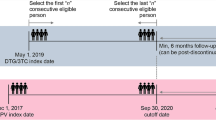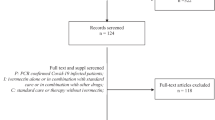Abstract
Mutations in the genome of HIV-1 can compromise the success of antiretroviral treatments (ARTs) in HIV-1-infected individuals. The Frankfurt HIV Cohort Study Resistance Database (FHCS-RD) has previously documented a decline in the burden of resistance-associated mutations (RAMs) following the implementation of several new antiretroviral therapy regimens in 2007. In the current study, the annual burden of RAMs documented in the FHCS-RD in 2005–2013 was set in relation to the annual number of all cohort patients, drug regimens, available resistance tests, and prevalence for each RAM on relevant codons of reverse transcriptase (RT) and protease (PR) genes. A specific focus was put on the prevalence of the tenofovir disoproxil fumarate (TDF) signature mutation K65R in HIV-1 RT in relation to the application of TDF within ART. Between 2005 and 2012, a total of 4423 HIV genotyping data sets from 4509 patients were analysed. All mutations show a consistent decline, and the most impressive decrease was observed for thymidine analogue mutations (TAMs). The frequency of non-TAMs and PR mutations also decreased, but generally to a lower extent. The prevalence of K65R decreased from 2.6 % in 2005 to 0.2 % in 2012 despite increased use of TDF-containing ART. Both the improved strategic use of TDF in ARTs and generally more effective ART regimens may have resulted in decreasing RAM prevalences in FHCS-RD since 2007. These trends challenge the cost-effectiveness of resistance testing prior to failing ART.


Similar content being viewed by others

References
Resino S, Bellon JM, Resino R, Navarro ML, Tomás Ramos J, de José MI et al (2004) Extensive implementation of highly active antiretroviral therapy shows great effect on survival and surrogate markers in vertically HIV-infected children. Clin Infect Dis 38:1605–1612
Machado DM, Fernandes SC, Succi RC, Freire WS, Pannuti CS, Gouveia AB et al (2005) Analysis of HIV-type 1 protease and reverse transcriptase in Brazilian children failing highly active antiretroviral therapy (HAART). Rev Inst Med Trop Sao Paulo 47:1–5
Dutta Choudhury S, Chaudhury AK, Kalra R, Andrabi R, Wig N, Biswas A et al (2010) Antiretroviral drug resistance mutations in the reverse transcriptase gene of HIV-1 isolates from Northern Indian patients: a follow-up study. Arch Virol 155:563–569
Baxter JD, Dunn D, White E, Sharma S, Geretti AM, Kozal MJ et al (2015) Global HIV-1 transmitted drug resistance in the INSIGHT Strategic Timing of AntiRetroviral Treatment (START) trial. HIV Med 16(Suppl 1):77–87
Tilghman MW, Pérez-Santiago J, Osorio G, Little SJ, Richman DD, Mathews WC et al (2014) Community HIV-1 drug resistance is associated with transmitted drug resistance. HIV Med 15:339–346
Köksal MO, Beka H, Lübke N, Verheyen J, Eraksoy H, Cagatay et al (2015) A HIV-1 subtypes and drug resistance profiles in a cohort of heterosexual patients in Istanbul, Turkey. Med Microbiol Immunol 204:551–555
Alpsar D, Agacfidan A, Lübke N, Verheyen J, Eraksoy H, Cağatay A et al (2013) Molecular epidemiology of HIV in a cohort of men having sex with men from Istanbul. Med Microbiol Immunol 202:251–255
Fung HB, Stone EA, Piacenti FJ (2002) Tenofovir disoproxil fumarate. Clin Ther 24:1515–1548
Hirsch MS, Steigbigel RT, Staszewski S, McMahon D, Fischl MA, Hirschel B et al (2003) Long-term efficacy, safety, and tolerability of indinavir-based therapy in protease inhibitor-naive adults with advanced HIV infection. Clin Infect Dis 37:1119–1124
Gallant JE, Deresinski S (2003) Tenofovir disoproxil fumarate. Clin Infect Dis 37:944–950
Margot NA, Isaacson E, McGowan I, Cheng AK, Schooley RT, Miller MD (2002) Genotypic and phenotypic analyses of HIV-1 in antiretroviral-experienced patients treated with tenofovir DF. AIDS 16:1227–1235
Margot NA, Isaacson E, McGowan I, Cheng A, Miller MD (2003) Extended treatment with tenofovir disoproxil fumarate in treatment-experienced HIV-1-infected patients: genotypic, phenotypic, and rebound analyses. J Acquir Immune Defic Syndr 33:15–21
Gallant JE, Staszewski S, Pozniak AL, DeJesus E, Suleiman JM, Miller MD et al (2004) Efficacy and safety of tenofovir DF versus stavudine in combination therapy in antiretroviral-naïve patients: a 3-year randomized trial. JAMA 292:191–201
Rhee SY, Gonzales MJ, Kantor R, Betts BJ, Ravela J, Shafer RW (2003) Human immunodeficiency virus reverse transcriptase and protease sequence database. Nucleic Acids Res 31:298–303
Shafer RW (2006) Rationale and uses of a public HIV drug-resistance database. J Infect Dis 194(Suppl 1):S51–S58
Wolf K, Walter H, Beerenwinkel N, Keulen W, Kaiser R, Hoffmann D et al (2003) Tenofovir resistance and resensitization. Antimicrob Agents Chemother 47:3478–3484
Miller MD (2004) K65R, TAMs and tenofovir. AIDS Rev 6:22–33
Garforth SJ, Lwatula C, Prasad VR (2014) The lysine 65 residue in HIV-1 reverse transcriptase function and in nucleoside analog drug resistance. Viruses 6:4080–4094
D’Aquila RT, Schapiro JM, Brun-Vézinet F, Clotet B, Conway B, Demeter LM et al (2003) Drug resistance mutations in HIV-1. Top HIV Med 11:92–96
Gu Z, Salomon H, Cherrington JM, Mulato AS, Chen MS, Yarchoan R et al (1995) K65R mutation of human immunodeficiency virus type 1 reverse transcriptase encodes cross-resistance to 9-(2-phosphonylmethoxyethyl)adenine. Antimicrob Agents Chemother 39:1888–1891
Wensing AM, Calvez V, Günthard HF, Johnson VA, Paredes R, Pillay D et al (2014) 2014 Update of the drug resistance mutations in HIV-1. Top Antivir Med 22:642–650
Wolf T, Fuß B, Khaykin P, Berger A, Knecht G, Gute P et al (2014) Improved virological and immunological efficacy of resistance-guided switch in antiretroviral therapy: a Frankfurt HIV cohort analysis. Med Microbiol Immunol 203:409–414
Stürmer M, Reinheimer C (2012) Description of two commercially available assays for genotyping of HIV-1. Intervirology 55:134–137
Stürmer M, Berger A, Doerr HW (2003) Modifications and substitutions of the RNA extraction module in the ViroSeq HIV-1 genotyping system version 2: effects on sensitivity and complexity of the assay. J Med Virol 71:475–479
Santoro MM, Sabin C, Forbici F, Bansi L, Dunn D, Fearnhill E et al (2013) Drug-resistance development differs between HIV-1-infected patients failing first-line antiretroviral therapy containing nonnucleoside reverse transcriptase inhibitors with and without thymidine analogues. HIV Med 14:571–577
Charpentier C, Lambert-Niclot S, Visseaux B, Morand-Joubert L, Storto A, Larrouy L et al (2013) Evolution of the K65R, K103N and M184V/I reverse transcriptase mutations in HIV-1-infected patients experiencing virological failure between 2005 and 2010. J Antimicrob Chemother 68:2197–2198
Chan PA, Huang A, Kantor R (2012) Low prevalence of transmitted K65R and other tenofovir resistance mutations across different HIV-1 subtypes: implications for pre-exposure prophylaxis. J Int AIDS Soc 15:17701
Buscher A, Hartman C, Kallen MA, Giordano TP (2012) Impact of antiretroviral dosing frequency and pill burden on adherence among newly diagnosed, antiretroviral-naive HIV patients. Int J STD AIDS 23:351–355
Hanna DB, Hessol NA, Golub ET, Cocohoba JM, Cohen MH, Levine AM et al (2014) Increase in single-tablet regimen use and associated improvements in adherence-related outcomes in HIV-infected women. J Acquir Immune Defic Syndr 65:587–596
Blanco JL, Montaner JS, Marconi VC, Santoro MM, Campos-Loza AE, Shafer RW et al (2014) Lower prevalence of drug resistance mutations at first-line virological failure to first-line therapy with atripla versus tenofovir + emtricitabine/lamivudine + efavirenz administered on a multiple tablet therapy. AIDS 28:2531–2539
Martínez E, Ribera E, Clotet B, Estrada V, Sanz J, Berenguer J et al (2015) Switching from zidovudine/lamivudine to tenofovir/emtricitabine improves fat distribution as measured by fat mass ratio. HIV Med 16:370–374
Turner D, Shahar E, Katchman E, Kedem E, Matus N, Katzir M et al (2009) Prevalence of the K65R resistance reverse transcriptase mutation in different HIV-1 subtypes in Israel. J Med Virol 81:1509–1512
D’Aquila RT, International AIDS Society-USA, Schapiro JM, Brun-Vézinet F, Clotet B, Conway B et al (2002) Drug resistance mutations in HIV-1. Top HIV Med 10:21–25
Adjé-Touré CA, Cheingsong R, Garcìa-Lerma JG, Eholié S, Borget MY, Bouchez JM et al (2003) Antiretroviral therapy in HIV-2-infected patients: changes in plasma viral load, CD4+ cell counts, and drug resistance profiles of patients treated in Abidjan, Côte d’Ivoire. AIDS 17(Suppl 3):49–54
Skhosana L, Steegen K, Bronze M, Lukhwareni A, Letsoalo E, Papathanasopoulos MA et al (2015) High prevalence of the K65R mutation in HIV-1 subtype C infected patients failing tenofovir-based first-line regimens in South Africa. PLoS One 10:e0118145
Wainberg MA, Miller MD, Quan Y, Salomon H, Mulato AS, Lamy PD et al (1999) In vitro selection and characterization of HIV-1 with reduced susceptibility to PMPA. Antivir Ther 4:87–94
Arts EJ, Hazuda DJ (2012) HIV-1 antiretroviral drug therapy. Cold Spring Harb Perspect Med 2:a007161
White KL, Chen JM, Feng JY, Margot NA, Ly JK, Ray AS et al (2006) The K65R reverse transcriptase mutation in HIV-1 reverses the excision phenotype of zidovudine resistance mutations. Antivir Ther 11:155–163
Stephan C, Dauer B, Bickel M, Haberl A, Locher L, Müller A et al (2010) Intensification of a failing regimen with zidovudine may cause sustained virologic suppression in the presence of resensitising mutations including K65R. J Infect 61:346–350
Parikh UM, Bacheler L, Koontz D, Mellors JW (2006) The K65R mutation in human immunodeficiency virus type 1 reverse transcriptase exhibits bidirectional phenotypic antagonism with thymidine analog mutations. J Virol 80:4971–4977
Martín-Carbonero L, Gil P, García-Benayas T, Barreiro P, Blanco F, de Mendoza C (2006) Rate of virologic failure and selection of drug resistance mutations using different triple nucleos(t)ide analogue combinations in HIV-infected patients. AIDS Res Hum Retrovir 22:1231–1235
White KL, Margot NA, Ly JK, Chen JM, Ray AS, Pavelko M et al (2005) A combination of decreased NRTI incorporation and decreased excision determines the resistance profile of HIV-1 K65R RT. AIDS 19:1751–1760
Author information
Authors and Affiliations
Corresponding author
Ethics declarations
Conflict of interest
Authors declare that they have no conflict of interest.
Ethical approval
All procedures performed in study were in accordance with the ethical standards of the Ethics Committee of Faculty of Medicine, Goethe University No 270/09.
Additional information
Martin Stürmer and Christoph Stephan have equally contributed to this work.
Rights and permissions
About this article
Cite this article
Reinheimer, C., Wesner, A., Keppler, O.T. et al. Prevalence of K65R in patients treated with tenofovir disoproxil fumarate: recommendations based on the Frankfurt HIV Cohort Study Resistance Database (FHCS-RD). Med Microbiol Immunol 205, 315–320 (2016). https://doi.org/10.1007/s00430-015-0448-4
Received:
Accepted:
Published:
Issue Date:
DOI: https://doi.org/10.1007/s00430-015-0448-4



